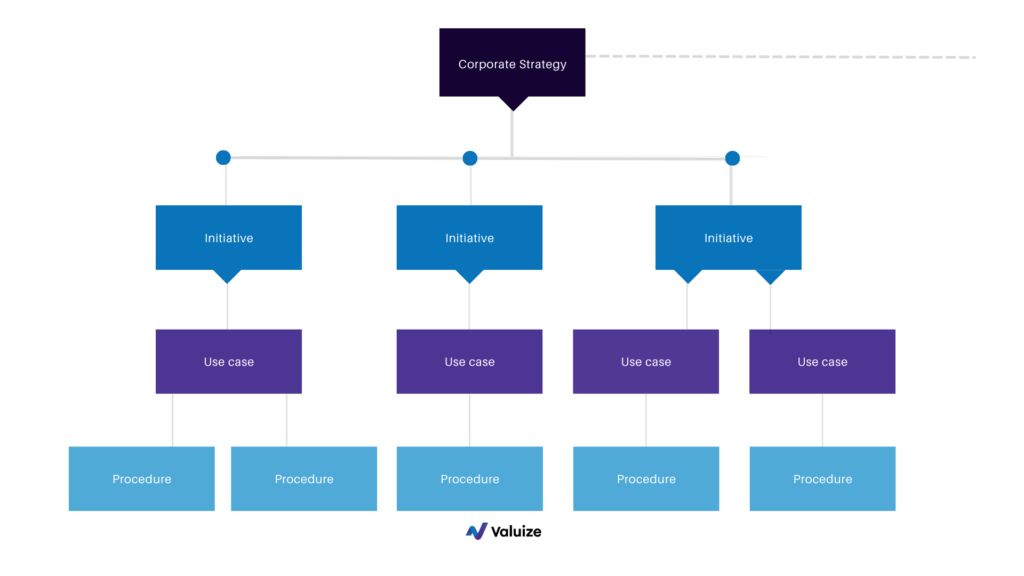Is Your Organization Truly United Around Customer Value?
The subscription economy has revolutionized B2B SaaS technology companies as well as the modern customer’s journey. The days of enterprise growth being driven by acquisitions and sales alone are gone. Today, enterprise technology companies have shifted from new customer acquisition to focusing on Net Dollar Retention (NDR) as the key profit engine.
In this new landscape, prescribing and delivering consistent value throughout the customer journey is a mission critical priority. Unfortunately, the reality in most enterprise organizations is that there is no universally-agreed upon structure for the definition and delivery of customer value. The silos of legacy organizations continue to exist in the modern subscription business, creating friction, miscommunication and misaligned responsibilities between organizations. If you haven’t implemented and instituted a company-wide agreed-upon customer value structure, you are putting your ability to drive and scale best-in-class NDR at extreme risk.
In this article, we outline the biggest challenges that enterprise organizations face when trying to deliver optimal value and share a bold structure of a customer value hierarchy that will unite your entire organization in pursuit of market-leading revenue retention and expansion.
The Challenge: A Siloed & Misaligned Organizational Ecosystem
At the senior leadership level, all of your C Suite and VPs are aligned on the different initiatives that your company is working towards. But how does that trickle down into your ecosystem? Even when we are using the same words and descriptors, they can be interpreted differently and through a siloed lens. The result? All of your functions have different versions of the value they’re responsible for delivering to customers, causing internal confusion. This confuses your customers as well!
The issue is compounded as your organization grows. When a Customer Operations leader comes in to help scale your Customer Success motion, they may not have access to the customer value structures that Marketing has created or that Product has built, so they build another version for the customer team. When they do, you end up with (at least) three value structures that are all very similar, but not exactly the same. As your company continues to grow and scale, those silos get more defined and the tools that exist inside of those silos become more disconnected.
The biggest rub? It’s not that this value structure or language doesn’t exist, it just doesn’t exist in a globally accessible and agreed upon way.
That’s the problem enterprise organizations must solve: create a common definition for your common language. This is where the ValueXperience (VX) framework can help; VX ensures that your Product team doesn’t have a misaligned mission from your Customer Success team and your Marketing team. Everyone comes together and acknowledges that they’re there for the same reason: to drive value for customers who will in turn drive revenue for your business.
Therefore, you must unify your language. Ensure that all of your executives, leaders, and team members have access to and use the same taxonomy and the same lexicon when they talk about customer value and outcomes. For example, in many organizations, the phrase “Success Plans” means something different to every function because there’s a Sales version of the Success Plan, a CS version of the Success Plan, a Gainsight Success Plan feature, and so on. Even though you are using the same words, none of those have the same definition.
By unifying your language, definitions and customer value structures, you’re not only easing the grinding of internal gears and breaking down silos, you’re also greasing the gears so that they move faster and more efficiently.
The Utopia: Unite Your Company With A Customer Value Hierarchy
What does a united customer value hierarchy look like?

It starts by outlining macro strategies. These are corporate strategies based on your customer’s overarching needs. The next level looks at the initiatives your customers need to achieve to drive those strategies. These are still fairly broad and cross-functional. Once you’ve understood the above, you can outline the products and features your company delivers that enable those initiatives. This is where use cases that complete the initiative are defined and the two are linked together by Value-Based Outcomes. At the bottom, the most fundamental level is defined by the procedures that empower use case completion and the runbooks necessary to complete procedures. For example, if one of your customer’s macro strategies was to be a place people loved to work, then your initiatives might include aligned performance reviews and bonuses or corporate sponsorship for professional growth. Your customer would then seek out a platform or system to help empower the use cases to drive those initiatives. If you own a SaaS solution to support these use cases, you’ve built the first branch of your customer value hierarchy.
Within this value structure, each team may have their own engagement level. For example, Marketing may operate primarily at the initiative level, defining and designing messaging to attract customers focused on those initiatives, whereas Product may focus on opportunities at the use case level to expand feature functionality to meet a need. With the help of this company-wide agreed-upon structure, each team will understand how their piece of the puzzle fits into each other section of the structure, and have a holistic view of your customer’s value journey so they can effectively communicate with all cross-functional teams using the same taxonomy. This can help ensure smooth and efficient handoffs from one team to another, creating a frictionless journey for your customers. It also ensures that every interaction your customer has with your organization, whether it be with Sales, CS, Professional Service, or Support, feels unified and is clearly aligned with the value they expect.
By removing the friction that exists between your cross-functional teams, you can maximize the efficiency of your value engine and ultimately drive more revenue for your business. The more inefficient you are, the less revenue you are retaining, hindering your ability to achieve best-in-class Net Dollar Retention.
Unite Your Organization Around Customer Value
Customer value is the currency of the subscription economy. With a unified value hierarchy and a common taxonomy, you can deliver value consistently and effectively throughout your customer’s journey and scale recurring revenue growth for your business.
In order to build an impactful customer value hierarchy, you need a solid understanding of what value actually means to your customers. Follow these 5 steps to build a powerful Voice of Customer program that drives deeper customer relationships and accelerates the achievement of your business goals.





